The 7 best mattress protectors tried and tested – I've found the best waterproof, cooling, and budget options from M&S, Dunelm, and more
I slept on multiple mattress protectors to find the best-in-class for waterproofing, night sweats, and cooling comfort


This guide was updated on 12.12.25 to add the best cooling mattress protector and the best anti-allergy mattress protector I've tested, plus a quick comparison table.
Why you can trust Ideal Home

✔ 100 years of industry expertise
✔ 10,000 hours of sleep product testing
✔ 10 bestselling mattress protectors tried and tested at home
The best mattress protectors are an essential addition to any sleep set-up, providing a barrier that shields our mattress from sweat, body oils, dead skin cells (yuck!), and general dirt and grime.
A waterproof mattress protector will also protect a mattress from bedwetting or accidental liquid spills, whilst a zippered protector or mattress encasement can defend our mattress from dust mites, allergens, and bed bugs.
As Ideal Home's Sleep Editor, a mattress protector is a bedding essential I recommend everyone purchase. After all, the best mattresses are expensive, so we all want to make sure our investment stays in top condition for as long as possible.
The good news is that you don't need to spend a fortune to get a decent mattress protector, with options starting from under £15. I've tested ten of the best on my own bed, assessing each for comfort and performance, and rounded up my top recommendations below.
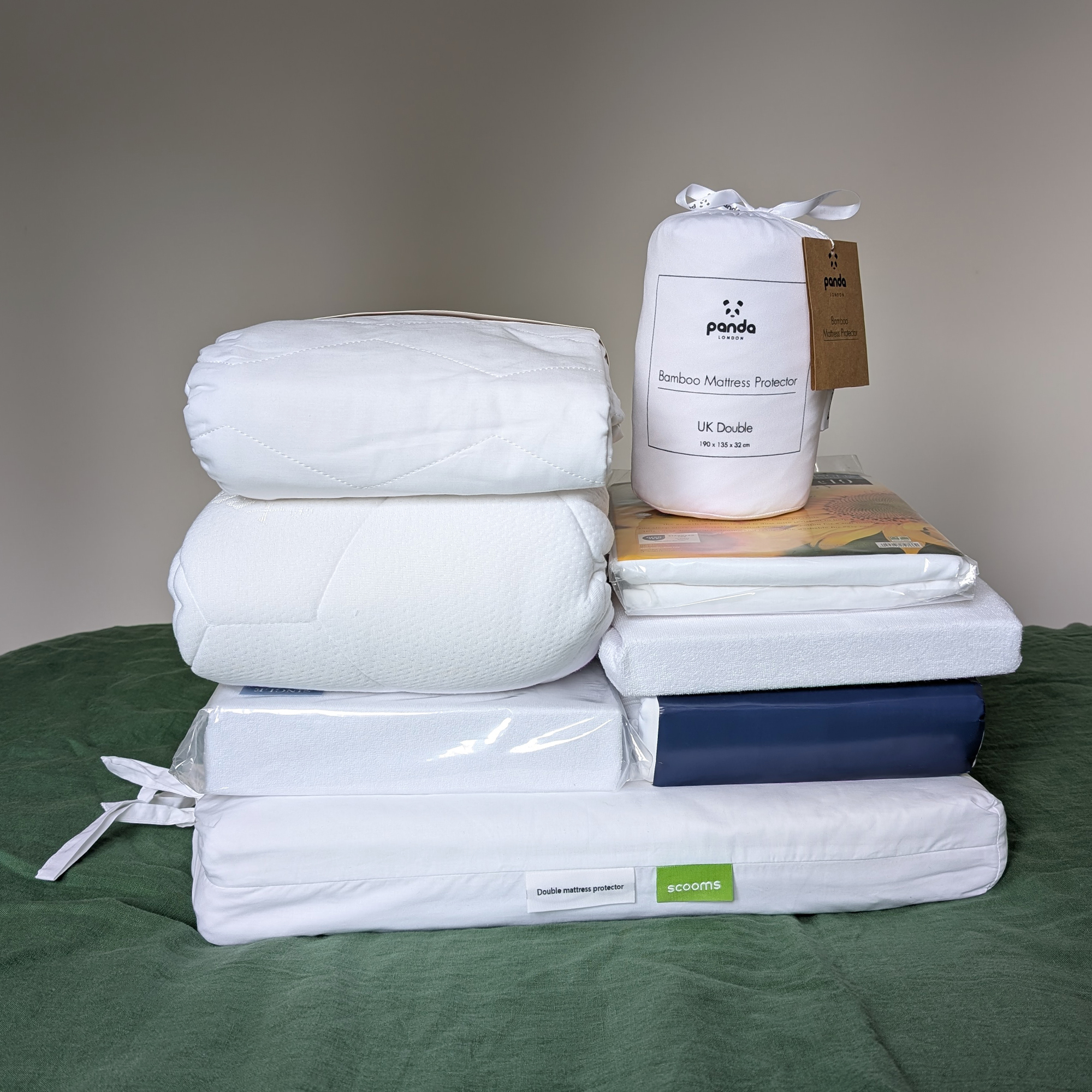
The quick list
Short on time? This quick list is an overview of the very best mattress protectors. You'll find more information on each product and why I recommend it if you keep on scrolling.
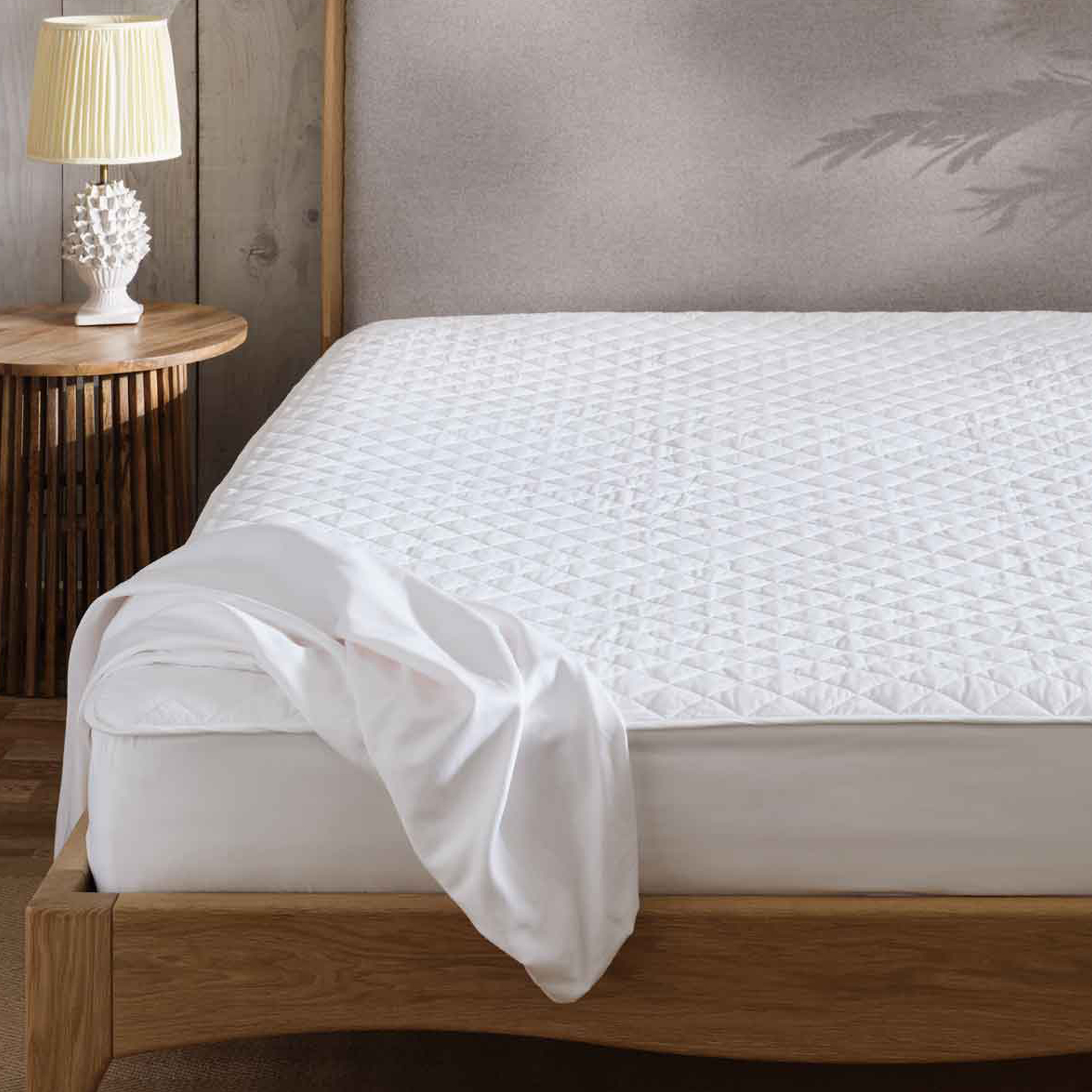
Best mattress protector overall
It's incredibly difficult to find a mattress protector made from all-natural materials, but this scooms protector is just such a find. Its lack of synthetic quilting delivers a cool and breathable sleep, and as long as you don't need waterproofing it's one of the best I've tested.

Best budget mattress protector
If you want an affordable way to protect your mattress, then this synthetic mix protector does a great job. It's super soft, silent, budget-friendly and easy to care for, as a hot sleeper I just found it was prone to making me overheat on warm nights.
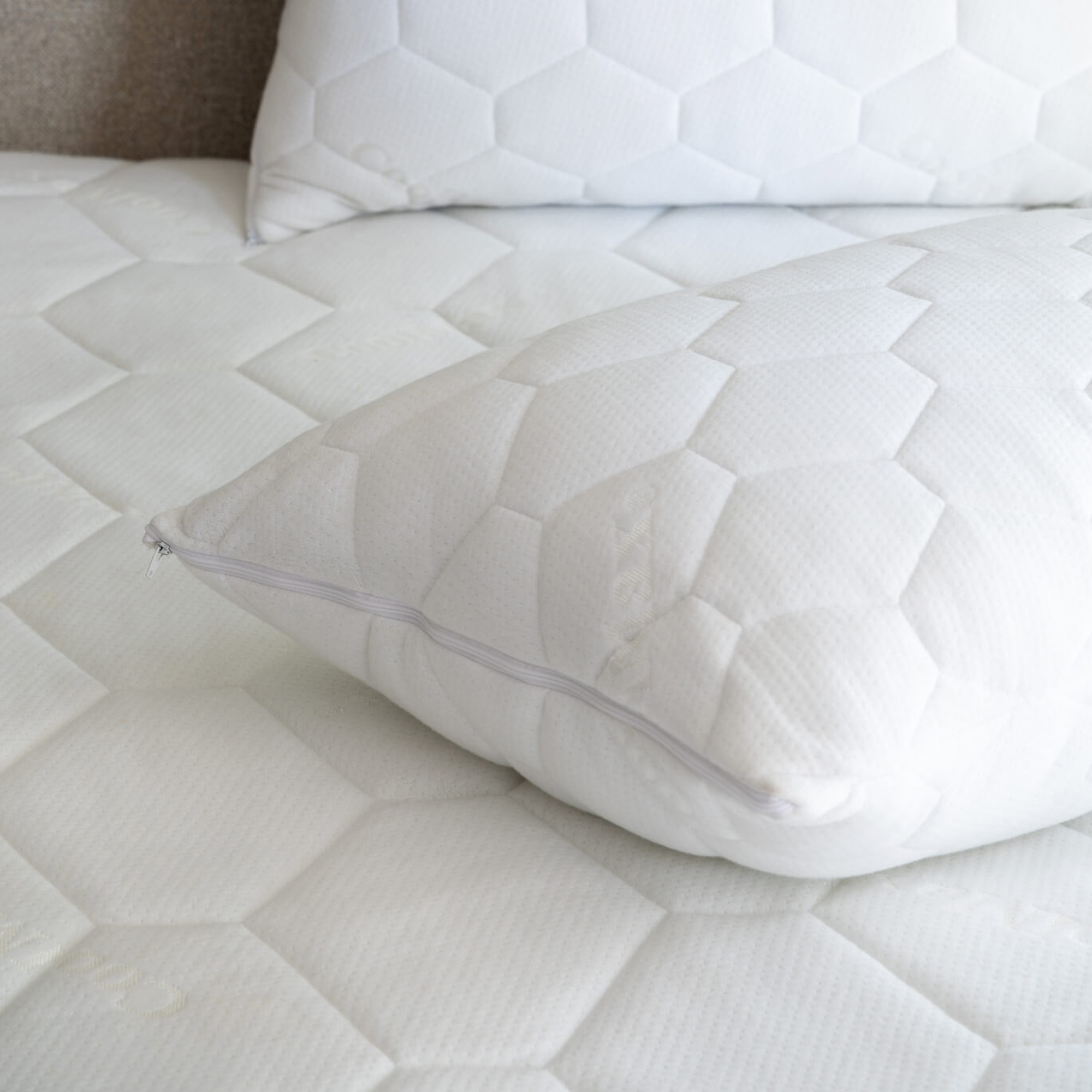
Best waterproof
If you need a waterproof mattress protector that can handle large spills like bedwetting, the Coolmax is 'the one'. It's comfortable, relatively quiet, and its super absorbent padding can hold a large amount of liquid whilst protecting your bed.
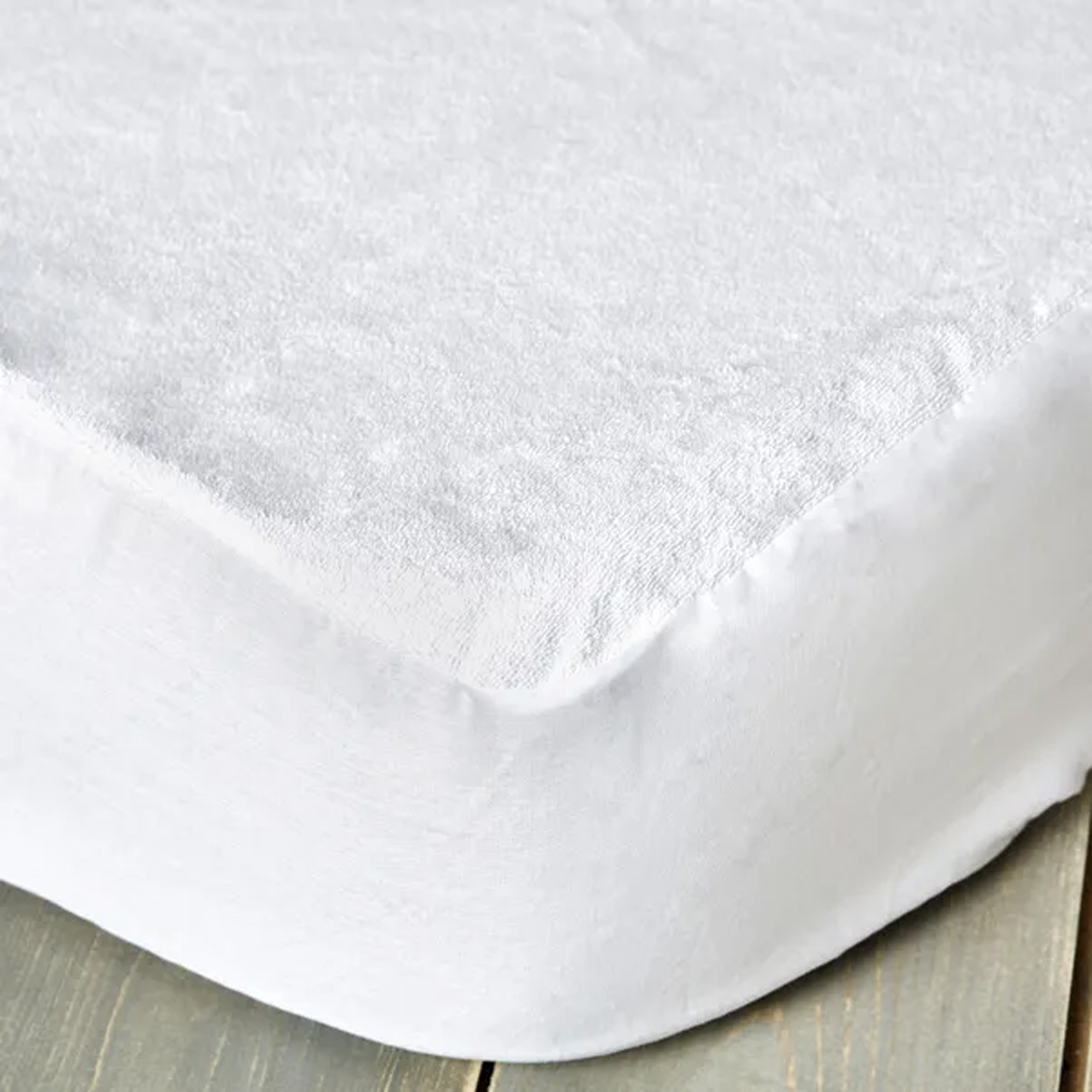
Best budget waterproof
Its terry towelling upper can't absorb anywhere near as much liquid as the best-in-class Coolmax waterproof mattress protector, but its waterproof membrane still protects your mattress from spills, and if you're on a budget, it's far more affordable.
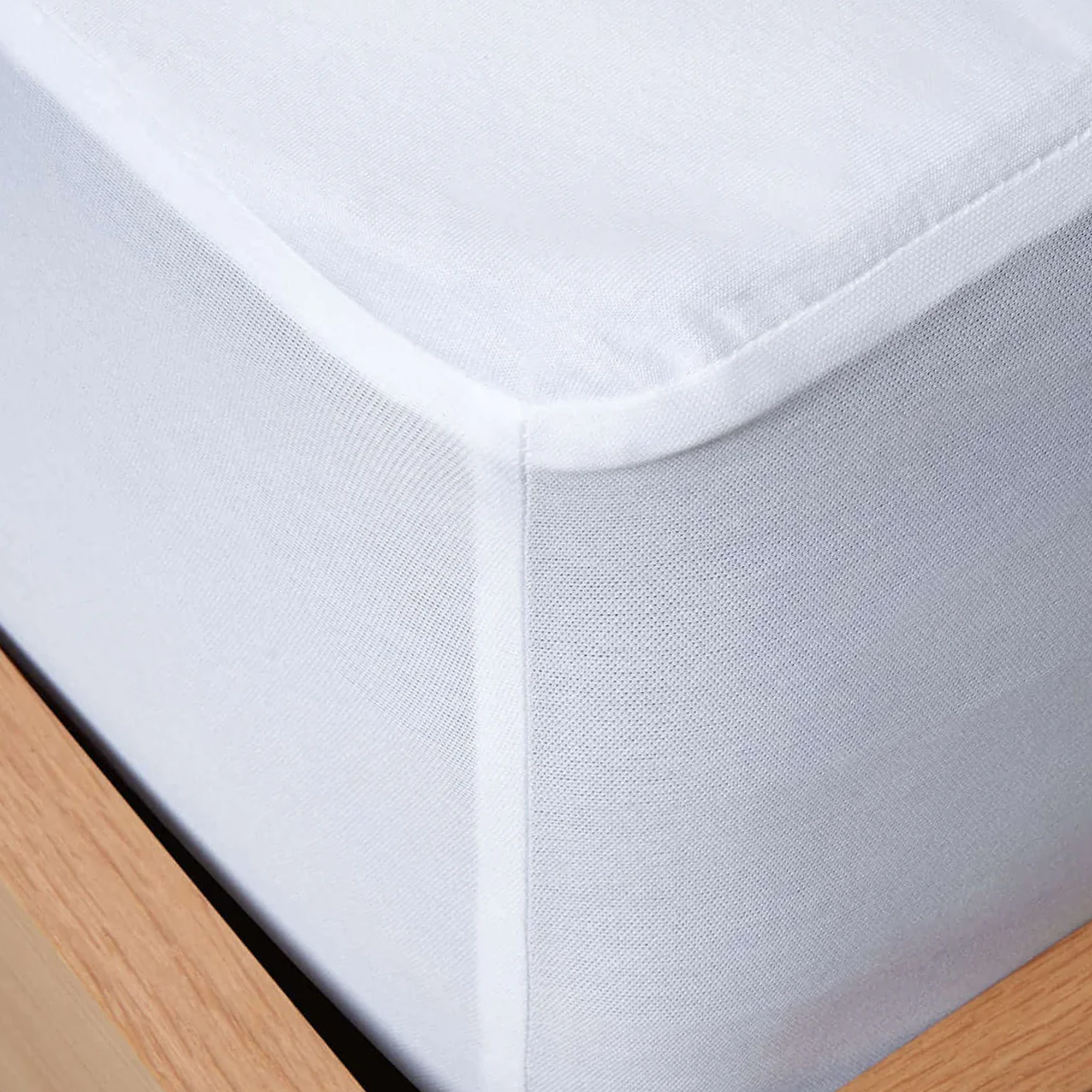
Best for night sweats
This waterproof mattress protector is quiet and super discreet. Its thin flexible design doesn't absorb much liquid (so for bedwetting, the Coolmax wins out), but if you want to protect your mattress from sweating or hot flushes, it's perfect. As a hot sleeper, I also found it more breathable than most waterproof options.

Best cooling
It's an investment, but as a hot sleeper, this mattress protector transformed my sleep. It's breathable organic cotton cover and temperature-regulating wool quilting enabled me to sleep far cooler at night and virtually eliminated overheating when I added it to a memory foam mattress.
Best mattress protectors: tried and tested
Best mattress protector overall

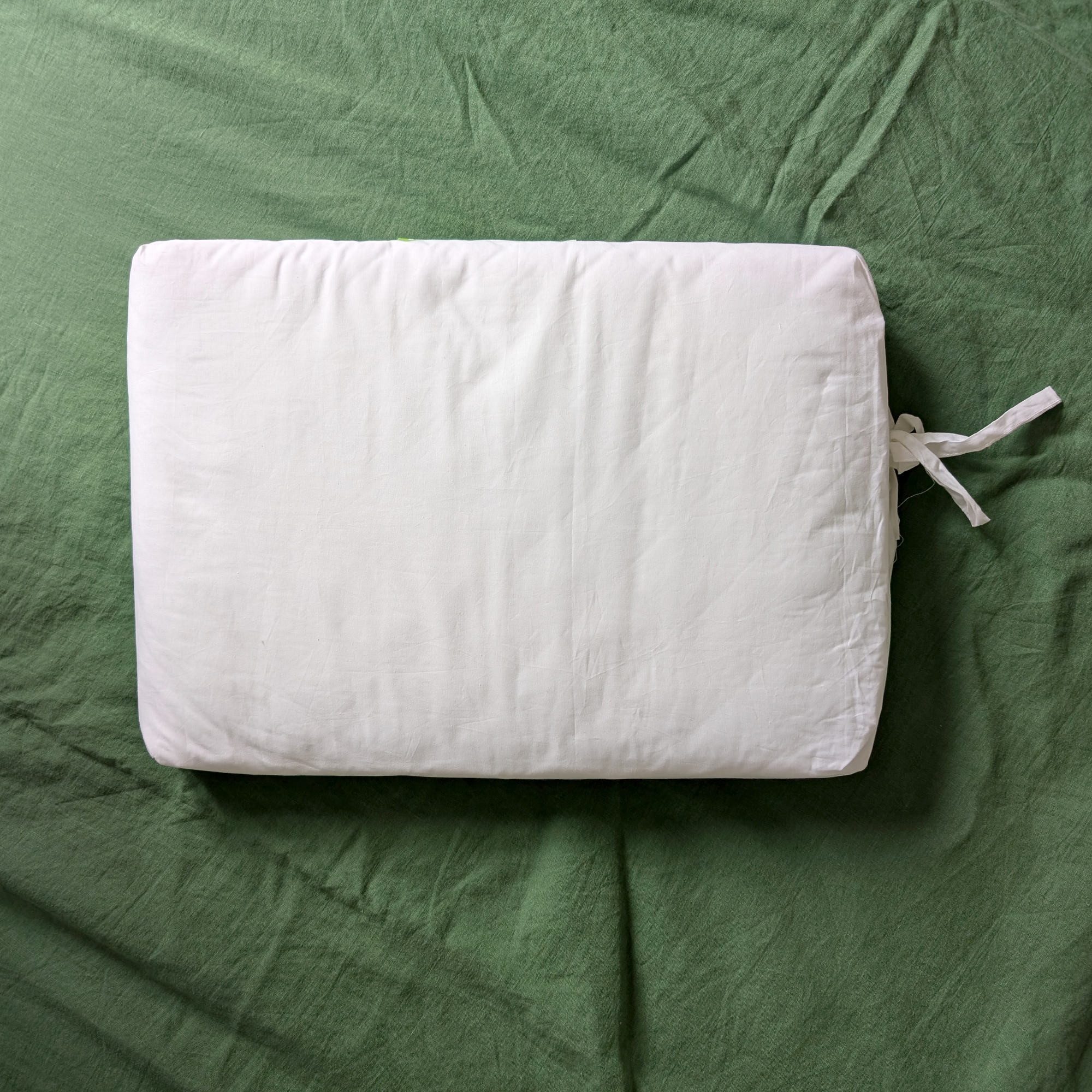
1. scooms 100% Pure Cotton Mattress Protector
Specifications
Reasons to buy
Reasons to avoid
Best for: If you're willing to pay a little more for a mattress protector, then I think this is one of the best. That's because it's made from pure cotton, which is incredibly difficult to find. Most mattress protectors have a layer of synthetic quilting inside, and if you tend to sleep warm, like me, that can mean overheating at night. However, the scooms Pure 100% Cotton Mattress Protector is exactly what it promises – pure cotton – which means it's super breathable and leads to no overheating.
Feel: This mattress protector definitely isn't cheap, but its quality is head and shoulders above any other cotton mattress protector I tested, including the M&S Pure Cotton Mattress Protector (which I found was loose-fitting and wrinkled on the bed). Its only slight downside is that it does feel a little thicker and a tiny bit stiffer than cheaper protectors. I didn't find this a problem at all, but if you have a super soft memory foam mattress, you may find it changes the feel of your mattress very slightly. In that case, I'd recommend the more pliable Woolroom Deluxe Washable Wool Mattress Protector further down my round-up instead.
Noise: There's no noise at all with this protector; instead, I enjoyed a completely silent sleep.
Waterproofing: This protector isn't waterproof, but, its quilting is thick enough that it kept any light moisture like sweat well away from the mattress.
Fit: A deep skirt means this mattress protector can fit a mattress up to 40cm in depth, so it's a good option if you want a protector to fit over a mattress that has a topper attached. It's designed to be slightly oversized when unboxed to allow for natural shrinkage when it's first washed, and although it was a little baggy before I put it through the washing machine, I still found it stayed in place on my 25cm deep mattress perfectly well.
Ease of care: I found this protector washed well. scooms advises it's machine washable at 30-40°c and can then be low tumble dried. However, because it's not synthetic, I did find its cotton quilting took a lot longer to dry than a polyester-mix protector; at least two times as long in fact.
Best budget mattress protector

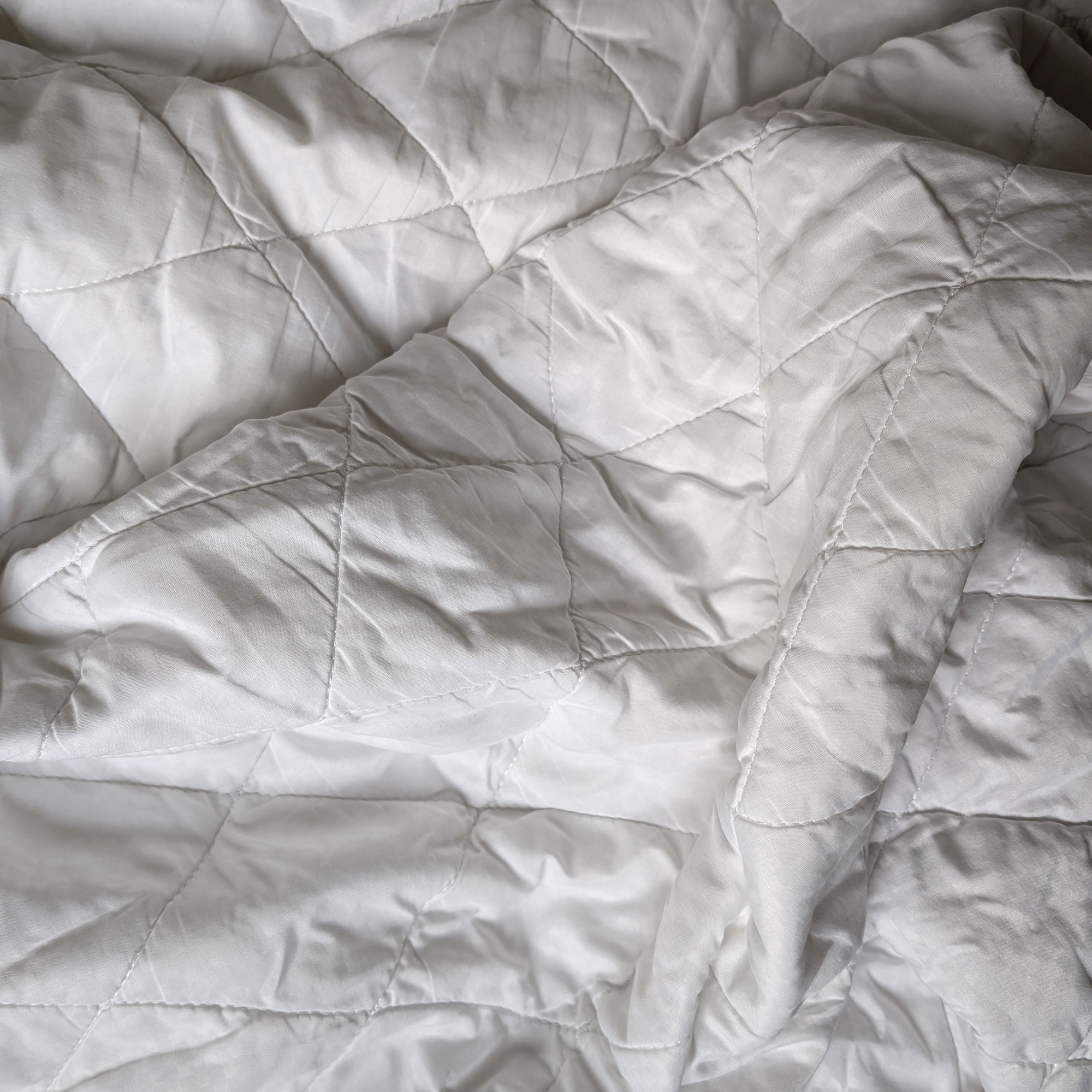
2. Dunelm Fogarty Soft Touch Mattress Protector
Specifications
Reasons to buy
Reasons to avoid
Best for: If you don't need a waterproof mattress protector, and you're not a hot sleeper who overheats at night, then there's no need to spend a fortune on a mattress protector. This is the best value mattress protector I've tested, and it's *very* easy to care for, so washing and drying is a breeze.
Feel: This protector costs between £14 and £25, depending on the size you need, and considering its price, the Fogarty Soft Touch Mattress Protector feels really quite luxurious. It's as soft as its name might suggest, and it makes for a really comfortable sleep surface. The only issue I found was that its synthetic polyester cover and quilting made me overheat. If you're not a hot sleeper, this may not be a problem for you, but if you are, I'd suggest opting for a pure cotton protector (like the scooms option above) or a wool-filled protector (like the Woolroom Deluxe Washable Wool Mattress Protector below) instead.
Noise: I noticed a very tiny bit of rustling when my sheet moved against the polyester protector underneath, but it's barely noticeable.
Waterproofing: Nope, no waterproofing here. But, the quilting is filled with a light layer of hollow fibre polyester that keeps any light stains or sweat lifted away from the surface of your mattress.
Fit: I tested the 30cm deep version of this protector and found it fitted my 25cm deep mattress well, but there's also a 35cm option if you have a deeper bed.
Ease of care: Because this protector is made from polyester, I found it super easy to care for. I stuck it in the washing machine and tumble-dried it on low, and it was ready to put back on the bed in record time. In fact, this is definitely my best-rated mattress protector in terms of ease of care.
Best waterproof mattress protector


3. Soak & Sleep Waterproof Coolmax Mattress Protector
Specifications
Reasons to buy
Reasons to avoid
Best for: This is by far the best waterproof mattress protector I've tested if you need a protector that can cope with bedwetting.
Feel: This is also the most cushioned mattress protector I've tested. In fact, it feels almost like a mattress topper thanks to its top layer of quilted polyester. That quilting isn't just there to absorb liquid; I found it also added an extra layer of softness to my bed. Whilst I can't say it felt cool to sleep on – the Panda Bamboo Mattress Protector is the coolest waterproof option I've found – as a hot sleeper, it didn't cause me to overheat like many waterproof mattress protectors have. It felt warm underneath me, but not overly so.
Noise: I found this protector a little bit rustly when on the bed, but definitely not enough to disturb my sleep, and still quieter than most waterproof mattress protectors.
Waterproofing: This is where the Coolmax really excels. Not only is it waterproof, but its thick quilting is also *very* absorbent. I poured a full glass of water onto it, and all of the liquid was quickly absorbed with no runoff over the edge of the bed, as with most other waterproof mattress protectors. If you're looking for a mattress protector that can cope with bedwetting, this is it.
Fit: I found its thin elasticated skirt really easy to fit to my mattress and it was true to size. It only comes in a 35cm skirt depth, but that should fit most standard mattress sizes.
Ease of care: Machine washable at 40°C, this protector is easy to care for. Although it can hold such large amounts of liquid, I found that its polyester wadding was still quick to dry. You can low tumble dry or line dry.
Best budget waterproof mattress protector

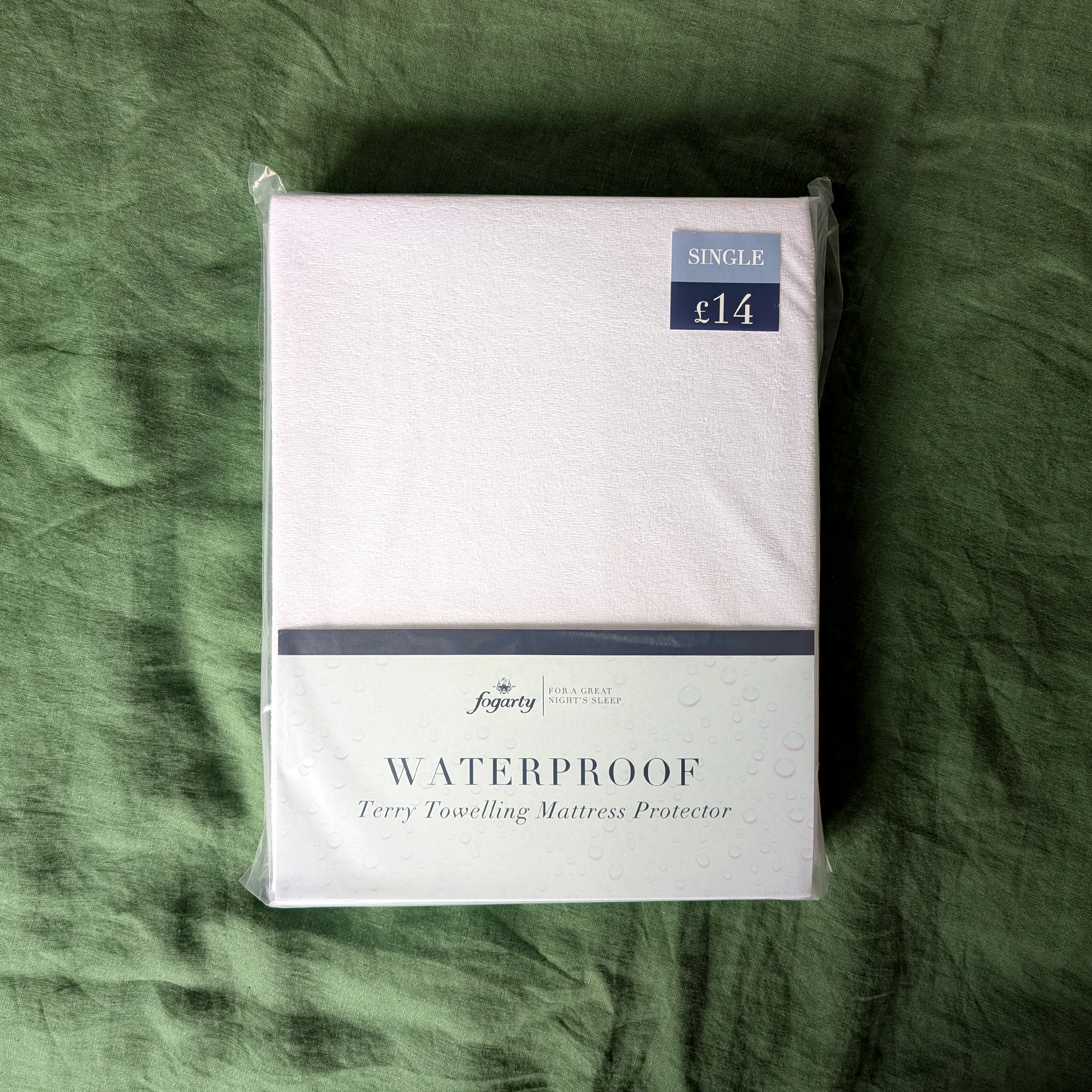
4. Fogarty Terry Towelling Waterproof Mattress Protector
Specifications
Reasons to buy
Reasons to avoid
Best for: Whilst the Soak & Sleep Waterproof Coolmax Mattress Protector is the best waterproof mattress protector I've tested, it is expensive. If you want a cheaper alternative, this is it, and considering its budget price tag, I was really impressed by its quality compared to similarly priced options.
Feel: This is a waterproof terry towelling protector, so it has a plastic backing with a thin layer of terry towelling on the surface, and unlike most waterproof mattress protectors I've tested at this price point, that plastic backing doesn't feel stiff and inflexible. Instead, this protector felt pretty nice to lie on. I also tested the M&S Sleep Solutions Terry Waterproof Mattress Protector, which is a similar price, and Dunelm's option felt far more flexible and less stiff and crunchy on the bed. Its main downside was that I found it slept very warm and caused me to overheat, but this has been the case with every waterproof protector I've tested at this price point.
Noise: Its waterproof backing does mean that there's a little rustling noise when this protector is on the bed, but it's far quieter and less 'crunchy' sounding than any other waterproof mattress protector at this price point. However, it can't compete with the Panda Bamboo Mattress Protector – that's still the quietest waterproof option out there.
Waterproofing: When I poured a glass of water over this protector, there was no leakage. The terry towelling also absorbed a little liquid, but only a little, so a lot of water still spread out across the protector and threatened to run off the sides of the bed. If you're after absorbency, the (more expensive) Soak & Sleep Waterproof Coolmax Mattress Protector is definitely the best buy.
Fit: This budget waterproof mattress protector only comes in one 30cm depth. That should be fine for your average mattress, but if yours is deeper than usual, or you have a mattress topper on the bed, it may be too shallow.
Ease of care: You can machine wash this mattress protector at 60°C, but you can't put it in the tumble dryer. However, I still found it dried pretty fast on the line or over a clothes horse.
Best for night sweats

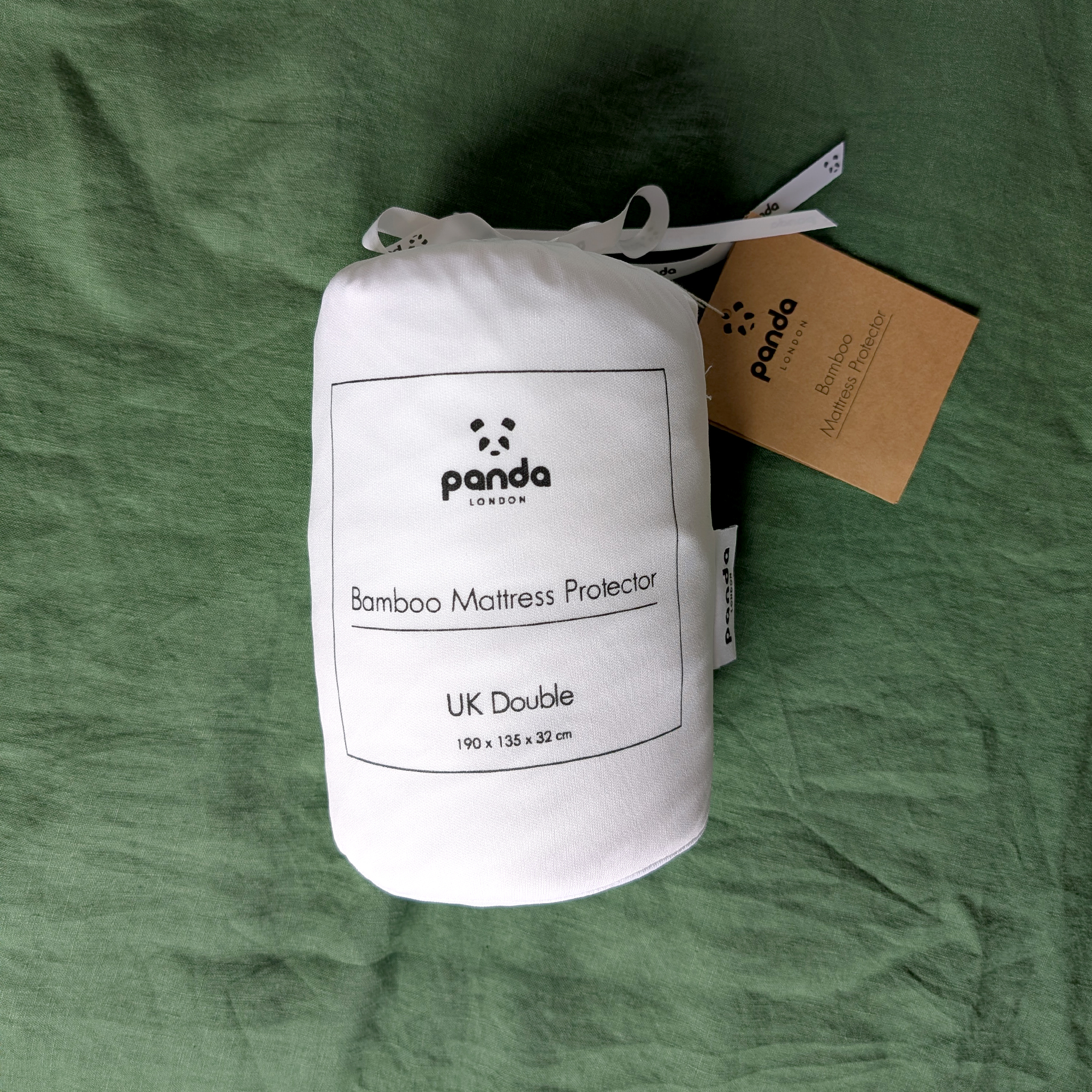
5. Panda Bamboo Mattress Protector
Specifications
Reasons to buy
Reasons to avoid
Best for: If you want a waterproof mattress protector that's super-discreet, this is it. It's incredibly thin, so you'd barely know it was on the bed, and whilst it isn't the most absorbent waterproof mattress protector out there, it is perfect for shielding your mattress from blood or night sweats.
Feel: This is one of the thinnest waterproof mattress protectors I've come across. There's no quilting, just a bamboo and polyester fabric layer with a waterproof TPU backing. As such, it's super flexible – meaning there's none of that uncomfortable stiffness that many waterproof protectors end up with – and super discreet; you'd never know there was a waterproof mattress protector on the bed when you lie down.
Noise: Because of the waterproof TPU backing, there was the tiniest hint of a rustle when I turned over on this protector, but it's by *far* the quietest waterproof mattress protector I've tested. You hardly know it's there, so it's super discreet.
Waterproofing: This protector is so thin that I was initially dubious that it was actually going to be waterproof. However, when I emptied a glass of water over the surface, I was incredibly impressed; there was absolutely no dampness on the other side. The only downside is that its thin fabric means there's very little absorbency; it's my best-rated mattress protector when it comes to protecting your mattress from night sweats, but larger amounts of liquid are likely to run off, so the Soak & Sleep Waterproof Coolmax Mattress Protector remains my top choice for bedwetting.
Fit: The Panda Bamboo Mattress Protector only comes in one 32cm depth, which should fit most beds fine. It's also so light and flexible, I found it the easiest protector to add to my bed. But, if you have an extra-deep mattress or a mattress topper on your mattress, you may find you need an option with a deeper skirt.
Ease of care: Because of its waterproof TPU backing, I was surprised that the care label suggests the protector can be machine washed at 50°C and low tumble dried, but yet again, my concerns were unfounded, and it washed and dried well!
Best cooling mattress protector


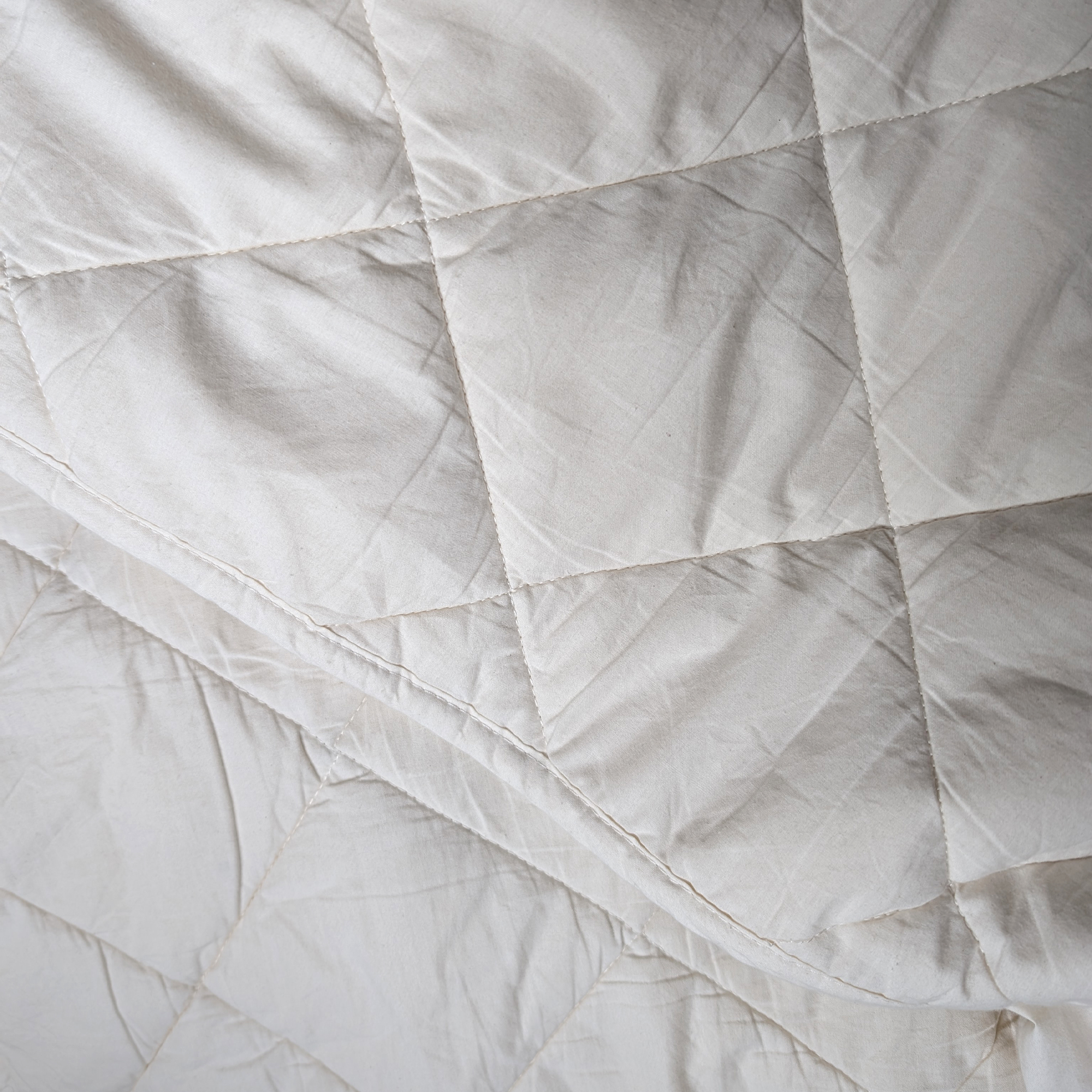
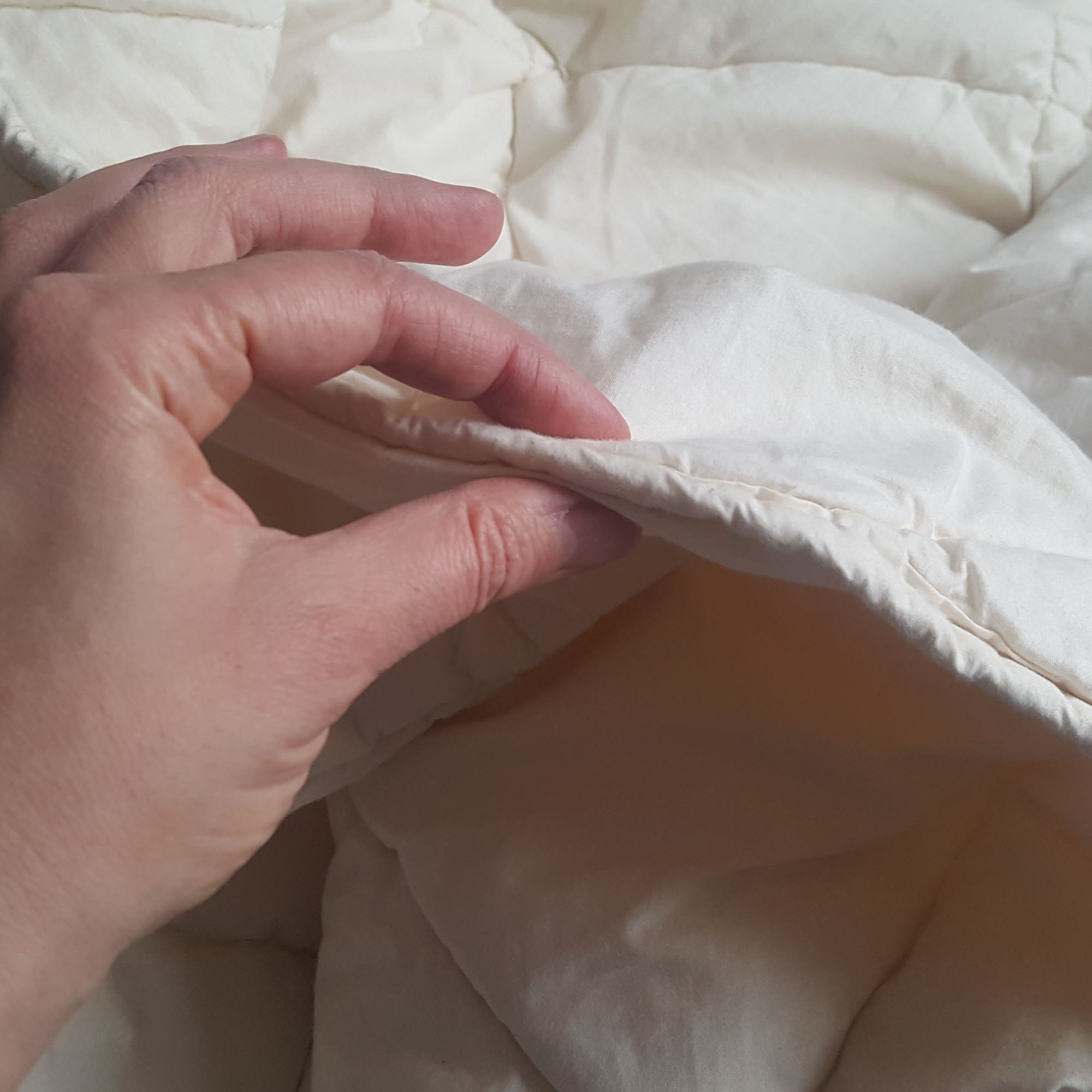
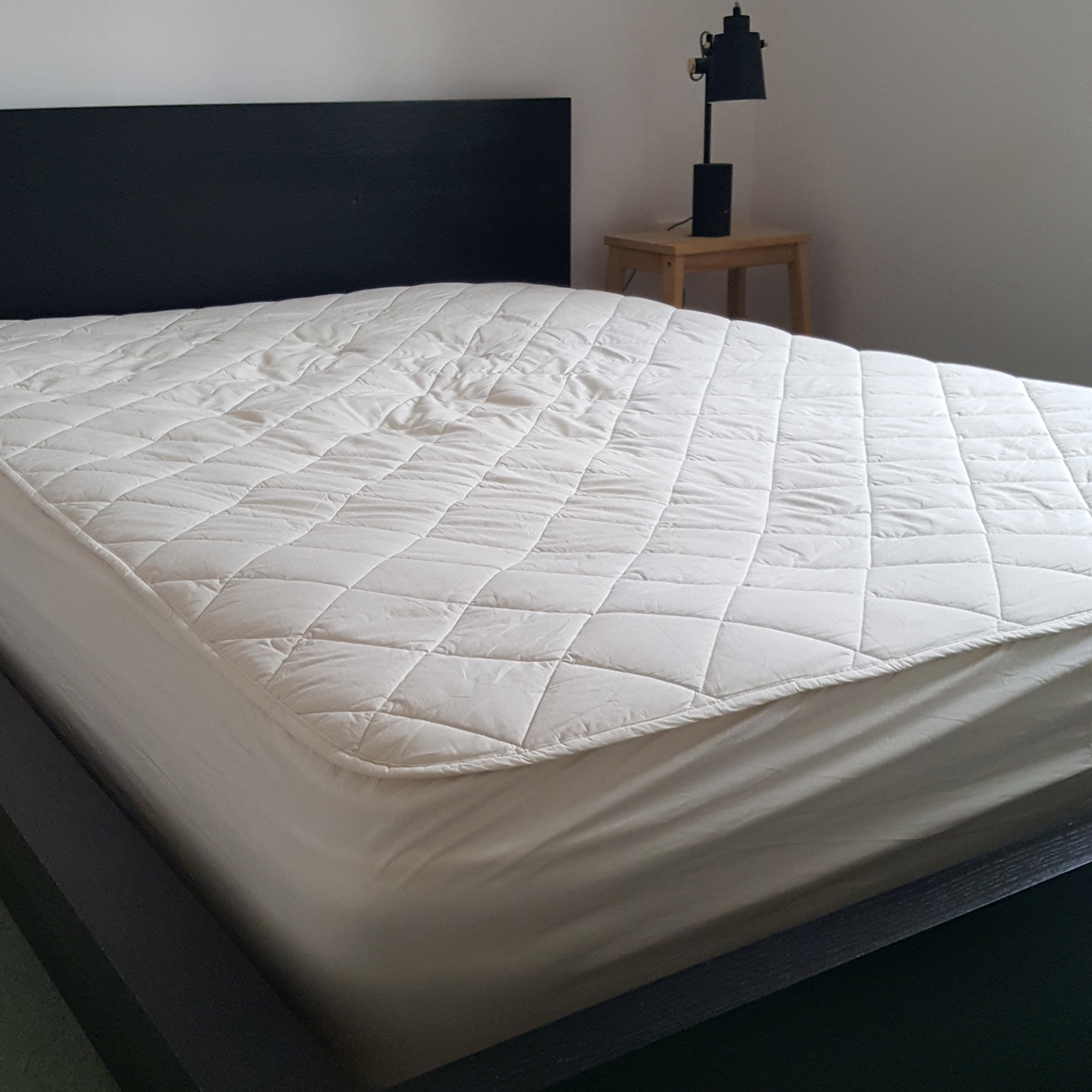

6. Woolroom Deluxe Washable Wool Mattress Protector
Specifications
Best for: Overall, this is the best cooling mattress protector I've tested, although scooms 100% Pure Cotton Mattress Protector did give it a run for its money. That's because its cotton outer has wool quilting underneath, and wool is *excellent* at adding breathability to a bed. I first tested this protector on a memory foam mattress that was causing me to overheat, and having not slept on wool bedding before then, I was amazed that it instantly made for a cooler and more breathable sleep. In fact, this protector outperforms many of the best cooling mattress toppers on the market. The downside is it's not cheap, but it comes with a 30-night sleep trial, so you can make sure it helps you to sleep cooler, too, before you commit.
Feel: This protector is only 1cm or so thick, which is what makes its cooling abilities even more impressive. It feels nice and soft on the bed, and I found it didn't change the feel of my mattress at all.
Noise: Joy of joys, this protector is completely silent!
Waterproofing: No waterproofing, but its layer of wool quilting keeps any stains lifted up away from the mattress surface.
Fit: When I first unpacked this protector, it came as a bit of a surprise that it was off-white rather than the brilliant white, highly-bleached bedding I've become used to, but its unbleached organic cotton is far kinder to the environment. I found its 35cm cotton skirt a little baggier than stretchy polyester options, but it still fit my smaller 25cm deep mattress well.
Ease of care: Because this mattress protector has wool quilting, it is a little more fussy to look after than a synthetic protector, but only a little. It's machine washable on wool/delicate cycle at 40°C – and it came out of my machine exactly the same size it went in, phew! – but it is line dry only rather than tumble dry.
Best anti-allergy mattress protector
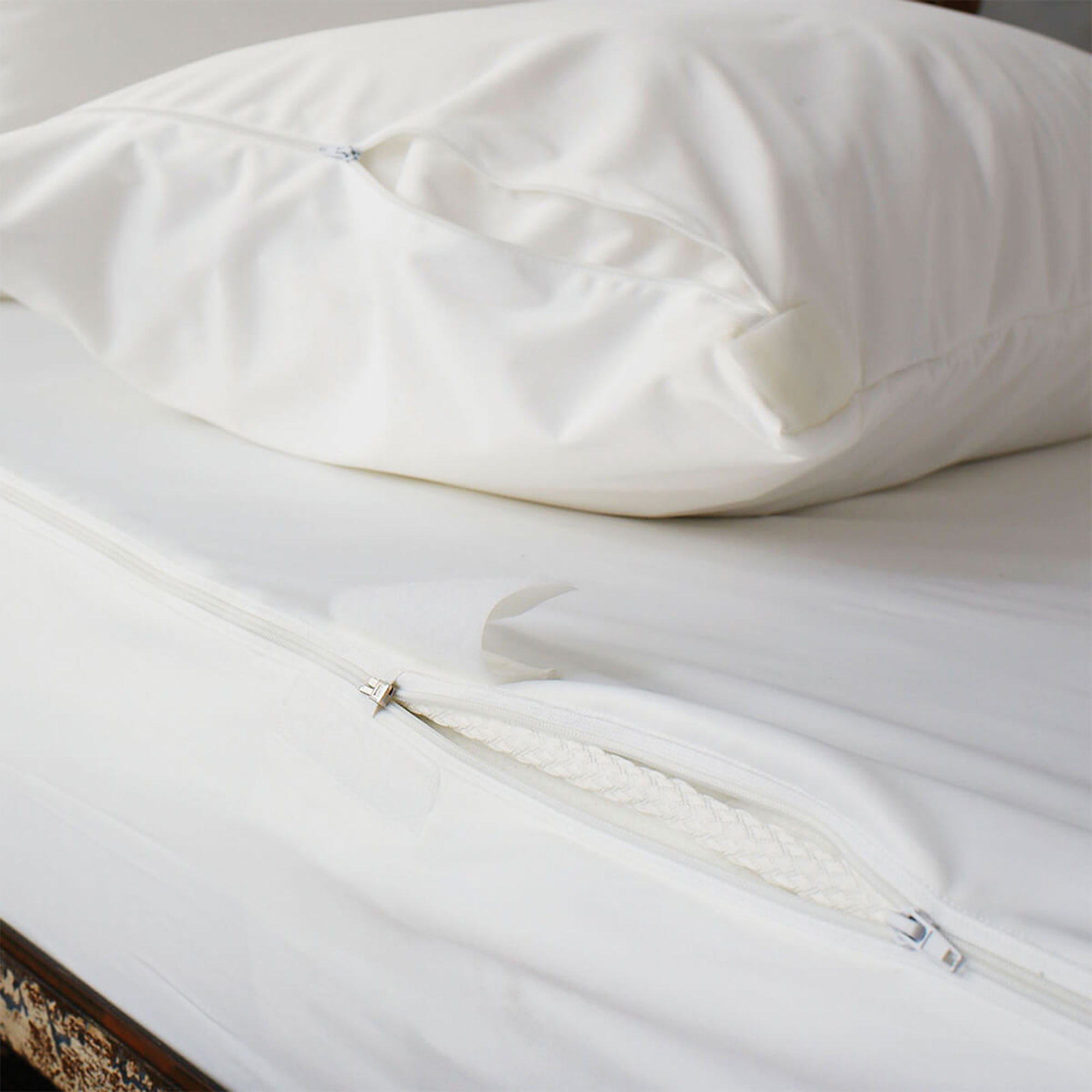

7. Soak & Sleep Anti Bed Bug Mattress Encasement
Specifications
Best for: This is the best anti-allergy mattress protector and the best anti-dust mite mattress protector I've tested. That's because it's an encasement mattress protector, which means that, unlike most mattress protectors, which only protect the mattress surface, it covers all six sides of your mattress. It's a bit like turning your mattress into Fort Knox and denying dust mites, pollen, pet hair, bed bugs, and mould spores access to your mattress from all sides.
Feel: This mattress encasement has a knitted jersey polyester cover backed in a waterproof polyurethane coating, and it feels surprisingly nice to the touch. I also found it fairly breathable for a waterproof mattress protector, with no overheating.
Noise: Considering this mattress encasement is waterproof, I was surprised by how quiet it is. There was the tiniest bit of rustling when I turned over in bed during testing, but really not much at all compared to other waterproof options.
Waterproofing: Unlike most waterproof mattress protectors that only protect the surface of your mattress, this mattress encasement provides waterproofing to all six sides.
Fit: Because this mattress protector is designed to fully encase a mattress, it is *definitely* not the easiest to fit. I found I needed two pairs of hands to lift the mattress and get the protector under the mattress to start with, but after that, it is easy to zip up the rest of the encasement. And, ingeniously, this encasement features two zips at different heights that allow you to adjust the depth of the encasement to suit different mattress depths. There's also a very robust velcro zip cover that offers extra protection to prevent bed bugs or allergens from penetrating the mattress.
Ease of care: Soak & Sleep recommends you wash this protector every 3-4 weeks to keep your bedding fresh and allergens at bay, and you can do so on a 30°c delicate machine wash.
At a glance
Mattress Protector | RRP (single) | Material | Depth | Waterproof | Breathability | Noise | Ease of care |
|---|---|---|---|---|---|---|---|
£55 | cotton | 40cm | ❌ | excellent | silent | machine washable at 30-40°C, low tumble dry | |
£14 | polyester | 30cm / 35cm | ❌ | decent/ poor | quiet | machine washable at 40°C, low tumble dry | |
£38 | polyester + TPU waterproof layer | 35cm | ✔ | decent | some rustling sound | machine washable at 40°C, low tumbledry | |
Dunelm Fogarty Terry Towelling Waterproof Mattress Protector | £14 | cotton + polyester + TPU waterproof layer | 30cm | ✔ | decent | some rustling sound | machine washable at 60°C, line dry only |
£30 | polyester + TPU waterproof layer | 32cm | ✔ | good | quiet | machine washable at 50°C, low tumbledry | |
£119.99 | cotton + wool | 35cm | ❌ | excellent | silent | machine washable on wool/delicate cycle at 40°C, line dry only | |
£40 | polyester + TPU waterproof layer | adjustable | ✔ | decent | some rustling sound | machine washable at 30°C, low tumbledry |
How I tested
There's really only one way to test a mattress protector, and that's by sleeping on it, so that's what I did in order to compile this guide. I've slept on ten (and counting) bestselling mattress protectors for a week each to compile this shortlist, and have only included those products that performed the best.
In the process, I assessed how easy each protector was to put on my bed, how well it fitted the mattress, and if it stayed on securely. I also assessed comfort and if the protector caused me to overheat during the night, and if it rustled or made any noise.

For the waterproof options, I poured a glass of water onto the protector and assessed whether there was any leakage through to the back of the protector. I also assessed the absorption or runoff of liquid. Finally, I washed each mattress protector to see how easy it was to care for.
Where possible, I've also thoroughly researched third-party customer reviews to see what other owners have to say about their sleep experience. All the mattress protectors included in this guide regularly get 4-5 star reviews from owners.
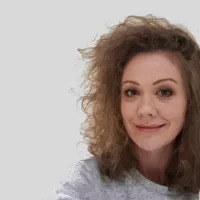
I'm Amy, and as Ideal Home's Sleep Editor I've spent the last four years testing sleep products by night and sharing my findings with our readers by day. All in all, that's over 10,000 hours of at-home product testing under my belt!
How to choose the best mattress protector for you
First up, it's worth clarifying exactly what is a mattress protector. In particular, because there can be a lot of confusion between mattress toppers vs mattress protectors.
A mattress protector is a thin layer of fabric that fits over your mattress to help protect the mattress from sweat, dust, grime, and – in the case of a waterproof mattress protector – from bed wetting or any other liquids.
The best mattress toppers also fit over your mattress, but they're a much thicker affair that's designed to add cushioning and comfort to a mattress that's too firm. In my opinion, a mattress protector is an essential addition to any mattress, whereas a topper is an optional extra.
So, how do you go about choosing the right mattress protector for your needs? There are eight main factors you'll want to consider.

1. Waterproofing: If you need to protect your mattress from bedwetting, then you’ll want a waterproof mattress protector. These feature an impermeable plastic membrane that prevents moisture from penetrating through the protector and reaching the mattress. You can get waterproof mattress protectors (where just the top of the protector is waterproof) or zippered waterproof mattress encasements (that protect all six sides of the mattress from moisture).
However, a waterproof mattress protector does come with downsides – largely that the plastic underlayer lacks breathability, can feel a little ‘plasticky’ underneath your bedsheet, and can rustle and make noise. So if you aren’t worried about bedwetting, it can be best to avoid a waterproof mattress protector and opt for a more breathable option instead. More on that next.
2. Breathability: Bedding made from synthetic materials such as polyester is likely to cause overheating as these materials lack breathability. Instead, these materials tend to reflect body heat and humidity back towards the sleeper, which can lead to us waking up hot and sticky in the night. Alternatively, natural materials such as cotton and wool allow for better air circulation. Better air circulation means the body can regulate its temperature better, which makes for a less disturbed and more restful night’s sleep.
3. Noise: As I've mentioned, some mattress protectors, especially waterproof mattress protectors, can be noisy. There's nothing worse than turning over in bed and hearing a crunchy, rustling mattress protector underneath you. If you're able to test the protector out in store, give it a scrunch before you buy to see if it's noisy. Or, if you're buying online, read reviews to see if owners have any noise complaints.

4. Allergies and bed bugs: If you want to protect your mattress from allergens such as dust mites or bed bugs, then the safest way to do so is to opt for a zippered mattress protector (also known as a mattress encasement) that covers all six sides of your mattress.
5. Fit: Make sure that the mattress protector you choose is the right size for your mattress, e.g. if you have a double bed, you’ll need a double mattress protector, a single bed requires a single mattress protector.
| Header Cell - Column 0 | Size (cm) | Size (feet) |
|---|---|---|
Small single mattress | 75 x 190cm | 2'6" x 6'3" |
Single mattress | 90 x 190cm | 3'0" x 6'3" |
Small double mattress | 120 x 190cm | 4'0" x 6'3" |
Double mattress | 135 x 190cm | 4'6" x 6'3" |
King mattress | 150 x 200cm | 5'0" x 6'6" |
Super king mattress | 180 x 200cm | 6'0" x 6'6" |
6. Depth: You'll also want to factor in the depth of your mattress. Many mattress protectors come in at least two different depths – those designed to fit a mattress of 25cm depth or under, and those designed to fit a mattress between 25cm and 30cm. Check the small print before you buy to ensure the protector will fit your bed mattress snugly. (A mattress protector that's too deep for your mattress will mean there's extra fabric, which will wrinkle under your body and be uncomfortable to sleep on, whilst a protector that's too shallow for your mattress is likely to ping off the corners of your mattress continually).
You can also get 'extra deep' mattress protectors designed to fit a mattress over 30cm deep – these are especially useful if you use a mattress topper on top of your mattress.

7. Ease of care: Look for a mattress protector that’s machine washable so it’s easy to clean and care for.
8. Environmental impact: Synthetic polyester mattress protectors are usually the cheapest option, but they’re derived from petrochemicals, which are non-renewable, hard to recycle, and don’t biodegrade easily, so they’re the most harmful to the environment. Instead, try to opt for a mattress protector made from natural materials, such as cotton, wool, or even bamboo, instead.
FAQs
Which mattress protectors are the best?
After testing multiple bestselling mattress protectors, I think there are a few contenders for best mattress protector overall. The scooms 100% Pure Cotton Mattress Protector and Woolroom Deluxe Washable Wool Mattress Protector are two of my best-rated mattress protectors if you're able to spend a little more, and you don't need waterproofing. They're both made of natural materials and protected my mattress from general sweat and grime whilst delivering a cool and breathable sleep.
If you need a more budget-friendly option, the Dunelm Fogarty Soft Touch Mattress Protector is the best affordable protector I've found. It's also much easier to wash and dry than the two options above. However, as a hot sleeper, its synthetic quilting did cause me to overheat.
If you need a waterproof mattress protector, the super-discreet Panda Bamboo Mattress Protector is ideal for protecting your mattress from sweating or occasional mishaps. However, the thicker Soak & Sleep Waterproof Coolmax Mattress Protector can most definitely absorb the most liquid, so this is my best-rated mattress protector for bed wetting. Dunelm's Fogarty Terry Towelling Waterproof Mattress Protector is the next best (and far more affordable) alternative for bed wetting.
And lastly, if you want to give your mattress six-sided protection from liquids, damp, dust mites, allergens, bed bugs, and any other types of critters, I think the Soak & Sleep Anti-Bed Bug Mattress Encasement is the best you can buy.
Which type of mattress protector is best?
The best mattress protector for you depends on your individual needs. For general purposes, a cotton or polyester mattress protector will safeguard your mattress. A pure cotton (or wool-quilted) mattress protector is the most breathable, so these are best for hot sleepers. A polyester mattress protector is the most affordable and the easiest to wash and dry quickly.
However, if you want to protect your mattress from severe night sweats or bed wetting, you'll need a waterproof mattress protector.

What is the best thickness for a mattress protector?
Unlike a mattress topper, it really doesn't matter how thick a mattress protector is, only that it does its job by protecting your mattress. Most are less than 1cm deep, and that's perfectly fine.
The only exception is if you're buying a waterproof mattress protector for bed wetting. You can get extremely thin and discreet waterproof mattress protectors, such as the Panda Bamboo Mattress Protector, which will definitely protect your mattress from liquid. However, because it's so thin, large amounts of liquid are likely to run off it and onto the floor – not ideal for bed wetting.
In this circumstance, you want a thicker mattress protector that has good absorbency to soak up the liquid. The Soak & Sleep Waterproof Coolmax Mattress Protector is by far the best I've tested in this regard.
Is it worth buying an expensive mattress protector?
Wondering if an expensive mattress protector is worth it? Yes and no. I see a lot of mattress brands trying to sell mattress protectors at extortionate prices as add-ons when people are purchasing a new mattress, and I definitely don't think those are worth it most of the time.
Instead, I recommend shopping independently for a good mattress protector, and in this case, spending more can sometimes get you a better product.
For instance, two of the best mattress protectors I've tested – the scooms 100% Pure Cotton Mattress Protector and the Woolroom Deluxe Washable Wool Mattress Protector – are also the most expensive in this round-up, costing between £65 and £145 for a double.
That's a *lot* for a mattress protector, and you definitely don't need to spend that much. But these two mattress protectors are made from purely natural materials, so they're the most breathable I've tested, and breathability means a cooler sleep.
You can get a decent synthetic mattress protector – like the Dunelm Fogarty Soft Touch Mattress Protector – for under £20, though.

Do mattress protectors actually work?
Yes, a mattress protector absolutely works. A mattress protector will protect your sleep surface and reduce the need to figure out how to clean a mattress should accidents or mishaps occur. In fact, they're a bedding essential I recommend everyone buy.
A protector may at first seem like an unnecessary add-on, but adding one to your sleep setup will do wonders for keeping your mattress guarded against sweat, blood, urine, and just general grease and grime. A lot of which can seep through a sheet without us realising it – urgh.
Ever noticed some marks or yellow stains on your mattress, but are unsure where they’ve come from? Yep, a mattress protector will take the stain instead, leaving your mattress fresh underneath. This all contributes to the longevity of your mattress, and some mattress retailers might even insist you use a mattress protector to keep your mattress warranty valid.
I've rounded up the main pros and cons of using a mattress protector below, and as you'll see, the benefits far outweigh most potential downsides.
PROS | Keeps your mattress clean | Makes your bed more hygenic | Reduces allergens if you wash the protector regularly | Prolongs the lifespan of your mattress | Can help maintain mattress warranty | Many mattress retailers insist you use a mattress protector to take advantage of a sleep trial |
CONS | More washing (but a protector is much easier to clean than a mattress!) | Waterproof options can be noisy and trap the heat | Some brands overprice their protectors, but you can shop around if you're not taking advantage of a sleep trial | Row 1 - Cell 4 | Row 1 - Cell 5 | Row 1 - Cell 6 |
How do you put on a mattress protector?
You put a mattress protector onto your mattress in exactly the same way you would a fitted sheet, pulling the elasticated skirt around all four corners of your mattress. You then layer a fitted or flat sheet over the mattress protector.

Do you have to wash a mattress protector every time you wash your sheets?
I don't wash my mattress protector every time I wash my sheets, although some people prefer to. Most of us should wash our bedsheets every one to two weeks, but I think a mattress protector can be washed every month, or even every two months.
That said, most mattress protectors are very easy to wash – you can read how to wash a mattress protector here – so there's no reason not to stick it in with your bed sheets when you strip the bed if your washing machine is big enough.
And there are circumstances when you'll want to wash a mattress protector more frequently. If you have allergies, then more regular washing can help to keep on top of any buildup of dust, pollen, or other allergens to avoid triggers.
And, of course, if a mattress protector gets wet or stained, it should definitely be washed immediately. If you're using a mattress protector to protect a mattress from bedwetting, the protector needs to be washed and dried immediately after an accident occurs.
Sign up to our newsletter for style inspiration, real homes, project and garden advice and shopping know-how

Amy is Ideal Home’s Sleep Editor and the Ideal Home Certified Expert on Sleep. She's spent the last four years researching and writing about what makes for the best night’s sleep during the day and testing out sleep products to find the best-in-class by night. So far she’s clocked up over 10,000 hours of pillow, duvet, and mattress testing experience.
Our go-to for all things sleep-related, she’s slept on and under bestselling products from Simba, Emma, Hypnos, Tempur, Silentnight, Panda, and many many more.
As a hot sleeper, Amy is always on the lookout for the most breathable bedding, but she also leads a wider team of testers to ensure our product testing encompasses both hot sleepers, cold sleepers, front sleepers, back sleepers, side sleepers, and everything in-between.